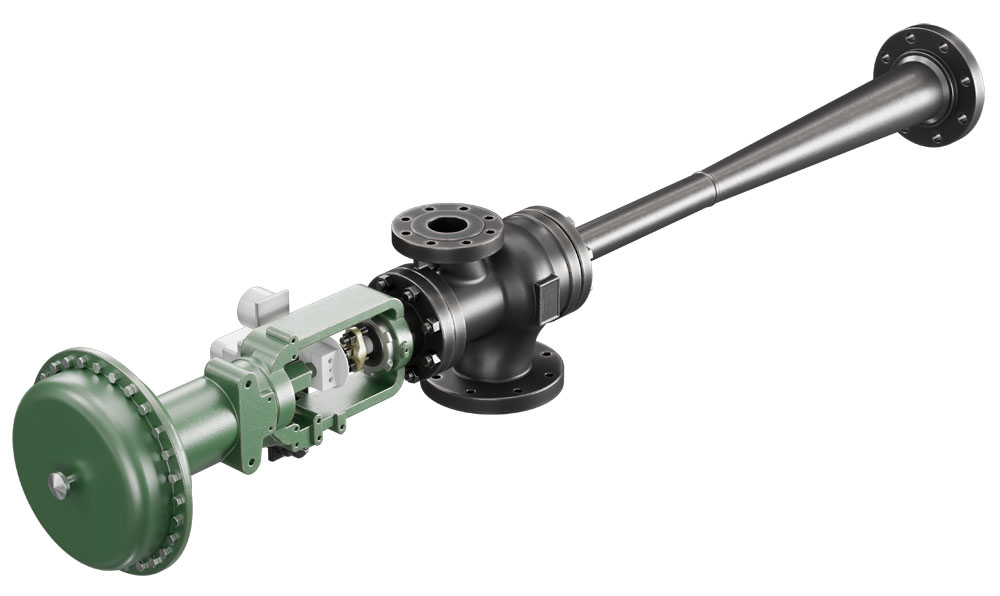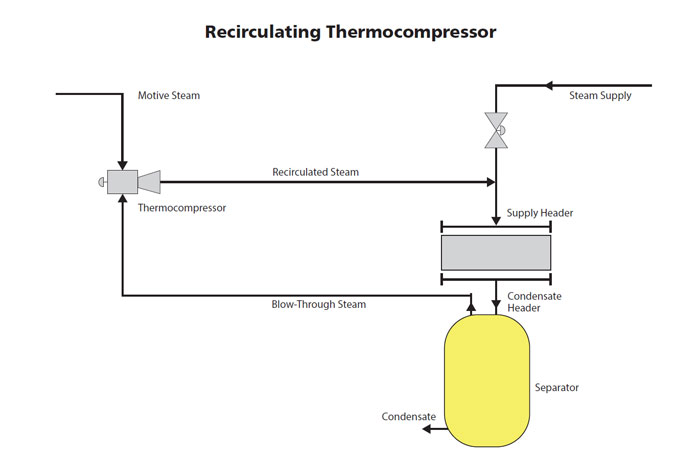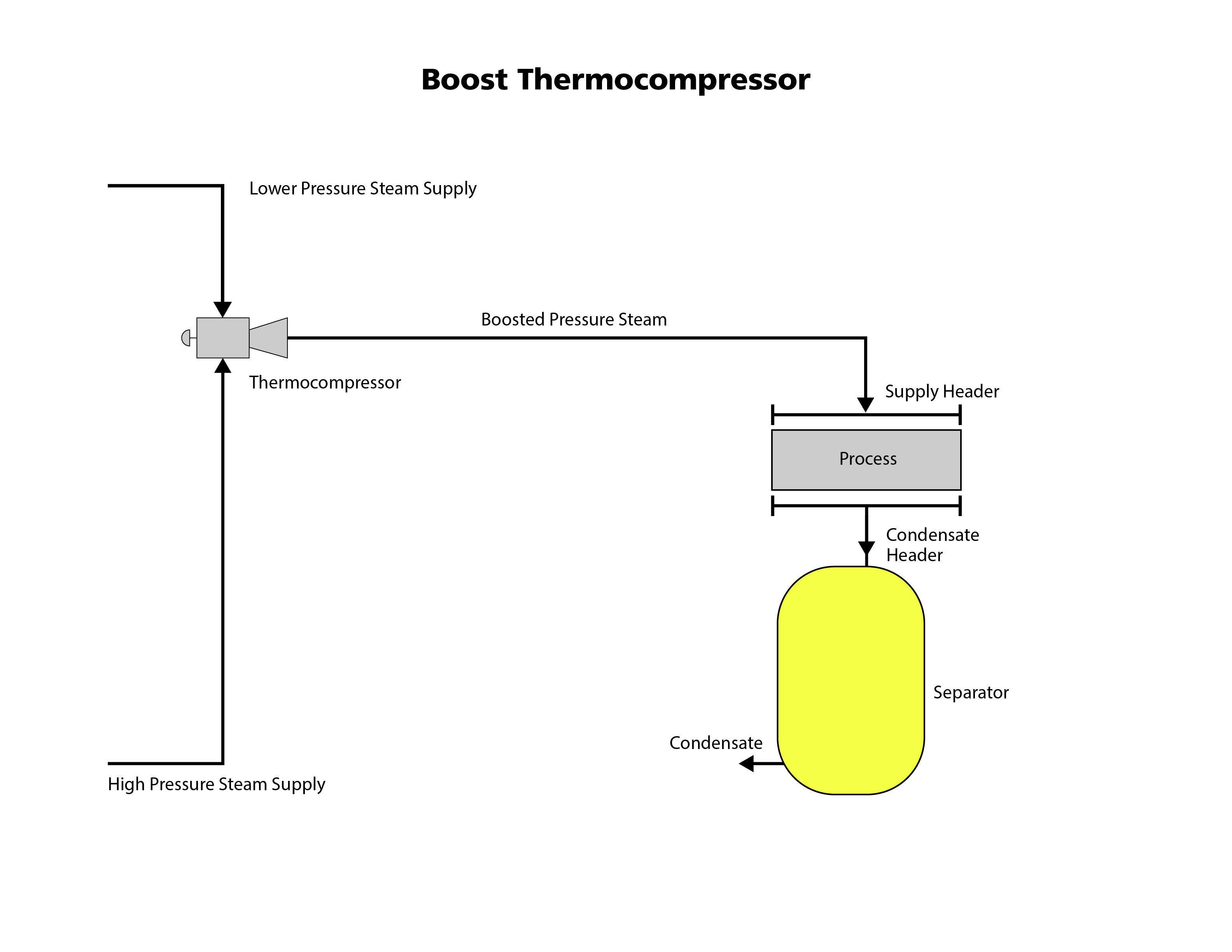Understanding Thermocompressors
Thermocompressors operate by using a higher-pressure motive steam source, which is injected through a spindle and nozzle assembly into a convergent/divergent throat section (a venturi jet device). This device creates a low-pressure zone or “suction” in the thermocompressor, which pulls lower pressure steam into the suction chamber, mixing it with the high-pressure steam jet before re-compressing it to an intermediate discharge pressure through the discharge cone.
operate by using a higher-pressure motive steam source, which is injected through a spindle and nozzle assembly into a convergent/divergent throat section (a venturi jet device). This device creates a low-pressure zone or “suction” in the thermocompressor, which pulls lower pressure steam into the suction chamber, mixing it with the high-pressure steam jet before re-compressing it to an intermediate discharge pressure through the discharge cone.
Although thermocompressors are often used in paper machine steam systems, the difference between a “recirculating” thermocompressor and a “boost” thermocompressor are not often understood.
Recirculating Thermocompressors
Recirculating thermocompressors are used in paper or tissue machine steam systems to control the drainage of condensate from the steam cylinders. When differential pressure is required to drain the drying cylinders, a signal from the differential pressure control loop is sent to the thermocompressor, retracting the spindle from the nozzle to inject more high-pressure steam. This increases the amount of vacuum generated in the suction port of the thermocompressor and increases the differential pressure available for draining the cylinders.
The thermocompressor creates a suction which is pulling steam through the drying cylinders, along with the condensate. Both the steam and condensate are passed to the dryer section’s separator tank where they are separated. The steam from the outlet of the separator is connected to the suction side of the thermocompressor, where the low-pressure created in the unit pulls the steam in and mixes it with higher pressure steam. It is then returned to the same dryer section at operating pressure. The steam that flows through the drying cylinders has been recirculated within the same dryer section, creating an efficient, closed steam loop.

Boost Thermocompressors
Boost thermocompressors are used to increase the operating pressure in drying sections closer to the maximum allowable operating pressure of the cylinders. This increase in pressure directly increases heat transfer and so increases the machines' drying capacity and production potential. In many mills with co-generation turbines, there is a low-pressure steam extract from the turbine which feeds the paper machine, and a medium-pressure steam extract for higher pressure applications. The paper machine’s drying cylinders may have a higher maximum allowable operating pressure than the low-pressure steam extract, but a lower allowable operating pressure than the medium-pressure steam extract.
In cases where there is some margin between the maximum operating pressure of the cylinders and the low-pressure extraction, it can be efficient to install a boost thermocompressor which uses the medium-pressure extraction steam as the motive steam supply. The thermocompressor entrains the low-pressure extract steam into the suction side of the thermocompressor and discharges it to an intermediate pressure close to the maximum operating pressure of the cylinders. The lower pressure steam to the drying group has been boosted using the minimum amount of higher-pressure steam needed, giving additional drying capacity to the previously limited section.
